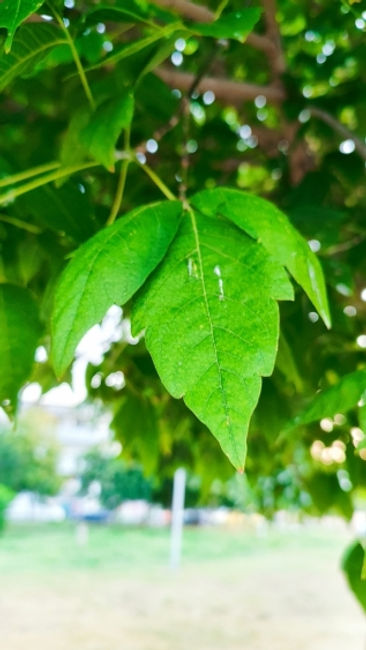Research in Context
Projections into the future and evaluations
An indispensable aspect of all research projects is to predict the future climate conditions that the trees will have to withstand. Different models have been developed locally.
The geographical scale may be a metropolitan area, a state or a whole continent (Australia, Which Plant Where project).
Regarding the time scale, there are usually provisions for more than one scenarios, from the worst to the more optimistic. And for different time intervals until the threshold year of 2100.
Climate Assessment Tool (CAT)
Botanic Gardens Conservation International
For the international network of botanical gardens and landscapes, the web tool Climate Assessment Tool (CAT) has been developed by the Botanic Gardens Conservation International and other institutions (Climate Change Alliance of Botanic Gardens, n.d.). Based on data for the index Mean Annual Temperature (MAT), it provides guidance on the suitability of a tree species to the predicted future climate scenarios of any selected botanical garden worldwide (CAT n.d.).
It considers three climate scenarios: “Current” (2020), used as a baseline reference, "Emissions Limited" (RCP4.5 by 2050) and "Business as usual" (RCP7.0 by 2090) (D’Antraccoli et al., 2023). It is a user-friendly tool and it has been applicated in a study on the suitability of present tree species in Lisbon (Cunha et al 2024).
Variables: Mean Annual Temperature (MAT).
Case study. Beginning with the selection of the location of the Botanic Garden of Stavroupoli at Thessaloniki in N Greece and inquiring about tree species Acer negundo, the risk of its future survival is assessed. For the aforementioned "Emissions Limited" climate scenario for 2050, two data sources indicate that it will be at the edge of the known temperature for the species. For the "Business as usual" scenario for 2090, a data source indicates that the species is not known to occur at this temperature.
Instead of the location of a botanic garden, any other location coordinates may be used for inquiring the future suitability of tree species.
The species Acer negundo is often used as an urban tree in Thessaloniki. With the use of CAT tool, it is assessed that its performance in the future (2090) may be inhibited. (Park Captain Drogas, Pylaía Thessaloniki, 2025).


USA, California
A climate-projection tool for the state of California is the Local Climate Change Snapshot by the climate data platform developed for California's Fifth Climate Change Assessment.
https://cal-adapt.org/tools/local-climate-change-snapshot/
The Cal-Adapt platform has been developed by the Geospatial Innovation Facility at the University of California, Berkeley with funding and advisory oversight by the California Energy Commission and the California Strategic Growth Council.
It is to be used in conjunction with the tree selection tool Selectree, which has been developed by the California Polytechnic State University (CalPoly) and the Urban Forest Ecosystems Institute (UFEI).
The combined use of Selectree and Local Climate Change Snapshot is part of the methodology presented by Igor Lačan, a lead researcher at the University of California, Division of Agriculture and Natural Resources (UCANR) Cooperative Extension (McBride and Lačan 2018, Lačan 2017)
Another similar tool is the Climate Explorer by the National Environmental Modeling and Analysis Center. It produces predictions for climate parameters for every county in the USA.
REFERENCES
PAPERS AND PRESENTATIONS
Cunha, A. R., Soares, A. L., Catarino, S., Duarte, M. C., & Romeiras, M. M. (2024).
Assessing the vulnerability of urban tree species to climate change: The case study of Lisbon gardens. Urban Forestry & Urban Greening, 104, 128664.
https://doi.org/10.1016/j.ufug.2024.128664
D’Antraccoli M., Weiger N. ,Cocchi L., Peruzzi L. (2023)
The trees of the pisa botanic garden under climate change scenarios: what are we walking into?
Sustainability
https://www.mdpi.com/2071-1050/15/5/4585
Lačan, Igor. 2017.
Landscape trees & climate change: selection and management.
University of California Agriculture and Natural Resources Cooperative Extension.
https://cecentralsierra.ucanr.edu/files/263983.pdf
McBride, Joe R, Lačan, Igor. 2018.
The impact of climate-change induced temperature increases on the suitability of street tree species in California (USA) cities.
Urban Forestry & Urban Greening. Volume 34: 348-356.
https://doi.org/10.1016/j.ufug.2018.07.020
RESEARCH INSTITUTIONS
Climate Change Alliance of Botanic Gardens
Climate Assessment Tool v1. n.d.
“How to use.”
Botanic Gardens Conservation International. Richmond, U.K.
https://cat.bgci.org/how-to-use
UCANR. n.d.
Street Trees and Climate Change.
Igor’s webpage. Updated April, 2023
https://ucanr.edu/sites/Igor/Street_Trees_and_Climate_Change/
TOOLS
Climate Change Alliance of Botanic Gardens. n.d.
"Climate Assessment Tool v1".
Botanic Gardens Conservation International. Richmond, U.K.
CalAdapt. n.d.
“Local Climate Change Snapshot”.
Geospatial Innovation Facility at the University of California, Berkeley.
https://cal-adapt.org/tools/local-climate-change-snapshot/
"Climate Explorer".
National Environmental Modeling and Analysis Center.
https://crt-climate-explorer.nemac.org/
Urban Forest Ecosystem Institute UFEI. n.d.
"SelecTree".
California State Polytechnic University.
